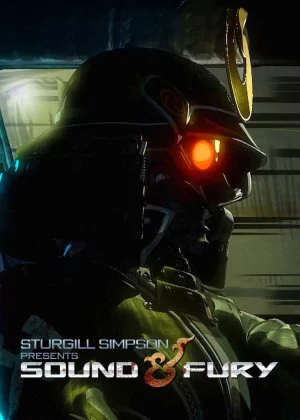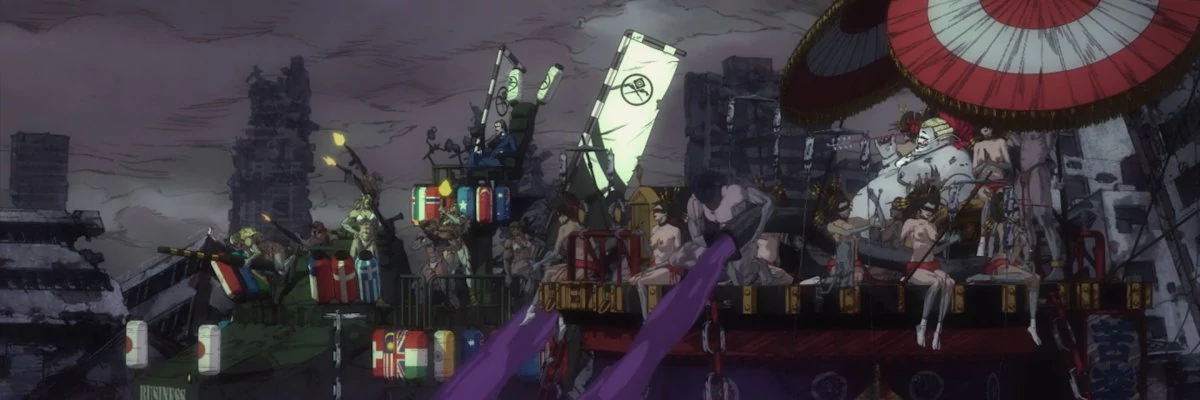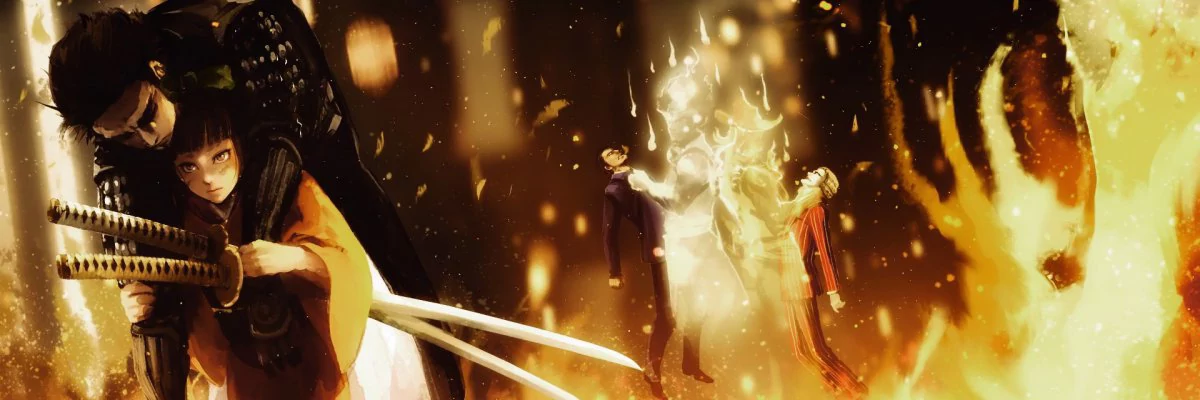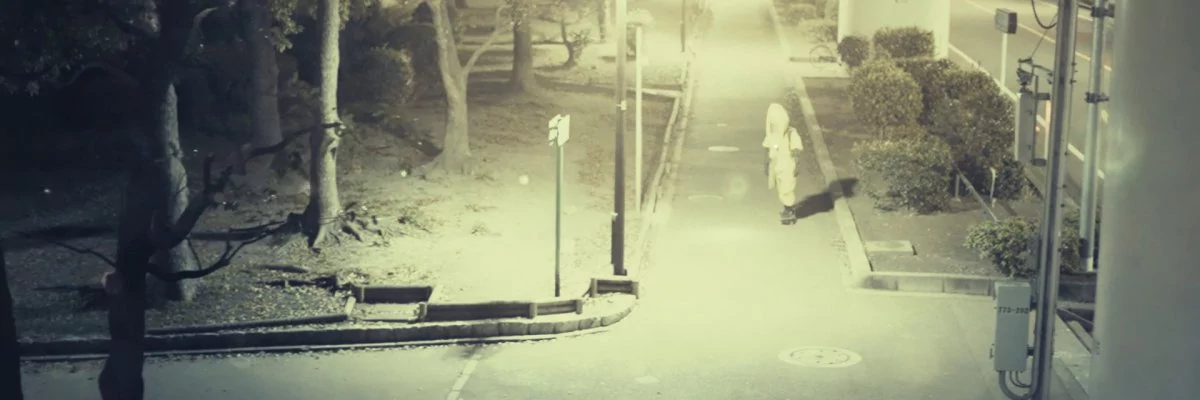Sound & Fury

The rise of the "visual album" is a fact. Credits to Beyoncé for generating the necessary mainstream buzz around this newish medium, though she definitely wasn't the first one to combine music albums with feature films. It's still early days for the visual album, which is actually quite exciting, because you can see music artists and film makers experimenting with different formulas, trying to find an ideal fit. Enter Sturgill Simpson, who turned his eye to several famous anime directors in order to help him deliver his vision of what a visual album should be.

Earlier this year The Lonely Island presented The Unauthorized Bash Brothers Experience, while Melanie Martinez debuted K-12 just recently. Two films that showed plenty of potential, but had some trouble finding the right balance between music video and narrative feature. Trying to side-step that issue, Simpson opted for the anthology format, which may be a more natural fit for a visual album. An anthology doesn't force a coherent style, nor does it require the same level of fluid transitions between songs.
I have to admit that I only got excited about Sound & Fury when I read the names of the directors working on this film. I hadn't heard of Sturgill Simpson before and listening to his music, it's pretty clear why. This kind of country & western/rock hybrid is hardly something I care for, I'm afraid this film has done little to change that. But props to Simpsons for picking some of the most talented directors in the field. The inclusion of Jumpei Mizusaki as overseeing director was a smart one, the addition of names like Koji Morimoto and Michael Arias is the icing on the cake.
There are 10 songs on the album, so 10 shorts in total. Sound & Fury kicks off with "Ronin", a short mood piece directed by Masaru Matsumoto that establishes the setting. A vintage American car is cruising through a wasteland, flashes of a foregone war hinting at the chaos that caused this post-apocalyptic future. Behind the wheels is a samurai-like figure, the main character of the film. The animation looks cool enough, even though the CG look is a little too apparent in places. Not a bad way to kick off the film. 3.5*/5.0*

The second segment is "Remember to Breathe", directed by Takanobu Mizuno. It's a more traditional-looking Japanese piece of animation that shows how our ronin got his famous sword. The art style is remarkable, mixing intricate line art with watercolor-like backgrounds and some flashy CG. It may sound a bit eclectic, but it's actually a very fitting mix that supports the rather violent nature of the short very well. A definite step up from the first short. 4.0*/5.0*
Up next is director Jumpei Mizusaki, who takes care of three separate shorts here, though two of them are adjoining ("Sing Along" and "A Good Look") and all three have matching art styles. Mizusaki's visual style is immediately recognizable, a mix of Japanese and American comic book elements that complement the music rather well. Expect some explosive action and some crazy fight sequences, reminiscent of Robot Carnival's A Tale of Two Robots. Mizusaki also takes care of the final short ("Fastest Horse in Town"), a short post-credits piece that ties together some loose ends. 4.0*/5.0*
Embedded into "A Good Look" we find Elsa Nakamichi's dance sequence, a weird little out-take where the characters take a moment from killing each other and contribute to a neat, orchestrated dance routine. It's filmed and edited like a regular music video, and while it serves no further purpose within the narrative, it's a fun breather that reminds you of the fact that you're watching a project that has its roots in the music business. 4.0*/5.0*

The fifth short ("Make Art Not Friends") is where things are getting truly exciting. Directed by Michael Arias, it (seemingly) brings one of Koji Morimoto's characters from Dimension Bomb to life and gives her a story of her own. We see a figure on a skateboard, in a hazard suit, riding around Tokyo, picking up various memorabilia in an otherwise empty city. The core of the short is live action footage, but there's a glare of computer imagery thrown on top to create a surreal atmosphere. Ace work that goes with one of the better songs on the album. 4.5*/5.0*
Hajime Sasaki follows up with one of the more peculiar shorts ("Best Clockmaker on Mars") of the bunch. Not many people are familiar with the concept of animated novels (if you're interested, check out Godkiller), so the general lack of animation here might come as a surprise to some. The artwork is amazing though and with very little Sasaki manages to create something quite spectacular, that is just as tense, explosive and emotive as the other shorts. 4.5*/5.0*
Somewhat disappointingly this quality streak is broken up by Henry Thurlow's "All Said and Done". The art style and animation quality take a serious dive, in what is by far the worst short of the bunch. It reminded me a little of the Avatar anime, which is fine if you're doing a TV series, but has no place in an ambitious project like this. At least it was short. 2.0*/5.0*

Arthell Isom's "Last Man Standing" is a step back in the right direction. The film's first person perspective isn't all that novel, but the execution is effective and the short features some tense and captivating moments. It's not quite up there with the best Studio 4°C has done in this field, but on its own it's definitely a worthwhile piece of animation. 3.5*/5.0*
Luckily Mizusaki was smart enough to save the best for last. Koji Morimoto is the undisputed king of experimental anime shorts, and even though my expectations are always enormous when sitting down for one of his films, he has managed to surpass them each and every time. "Mercury in Retrograde" is like nothing what he's done before, a mad mix of live action and animation that is extremely abstract and artistic, completely removed from traditional anime aesthetics but still very modern and intriguing. It is something that has to be seen to be believed, though I'm sure not everyone will appreciate its abstract nature. 5.0*/5.0*
Overall Sound & Fury is a fine anthology, with some truly stand-out entries that are executed with the highest level of craft and creativity, but as a visual album there are still a few gaps to bridge. The coherence between the different shorts still feels forced, the synergy between the songs and the visuals is not always apparent and the music itself doesn't quite work as a soundtrack. While that doesn't reflect too well on the original aspirations of this film, it results in some amazing shorts, directed by the cream of the crop of Japanese animation. That alone is reason enough to give this film a fair try.